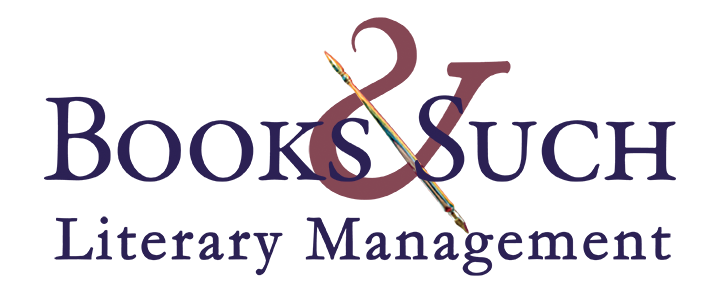“I was almost persuaded.”
Sad words, aren’t they? Especially if you’re the author who wrote the words that almost persuaded.
What keeps a reader from being persuaded by our writing–by the premise we propose, or the answers we provide, or the story we tell?
Whether we’re writing informational or inspirational books, what might prevent a reader from “buying” it?
Do we understand our audience?
All audiences:
- Want to care about our characters and/or our story
- Hate to be disappointed
- Want to be entertained or inspired or informed or encouraged or all four
- Want to feel they got their money’s worth and their time’s worth from what they read
Addressing those basic expectations to the best of our ability will help us conquer hills to climb on the path from “almost persuaded” to “persuaded.”
Do we understand their filters?
 Our writing won’t persuade anyone if we’re unaware that all readers read through a filter. They may slip on their reading glasses to see the print better, but they’re still reading through a filter. Their past, fears, faith or lack of it, preconceived notions, sensitivities, prejudices, desires, phobias, expectations, health, culture, regionality, wounds, and their perceived needs.
Our writing won’t persuade anyone if we’re unaware that all readers read through a filter. They may slip on their reading glasses to see the print better, but they’re still reading through a filter. Their past, fears, faith or lack of it, preconceived notions, sensitivities, prejudices, desires, phobias, expectations, health, culture, regionality, wounds, and their perceived needs.
What we write may register with others, but only if the filter through which they’re reading allows them to see the words clearly and embrace them as a truth they can swallow and digest.
If we know our target audience well, we will adjust to the filters already in place. If we can’t, we may not have selected the right target audience. For instance, if we’re laying out a detailed linear argument, but our target audience is non-linear thinkers, what hope do we have of our material connecting?
Do we understand their communication methods?
 The best teachers among us recognize that each classroom of students represents a variety of learning intelligences or styles. Some learn best through lecture (well, maybe one or two). Others learn best through kinetic, hands-on, tactile methods. Sill others learn best by both seeing and hearing in combination. Some are visual learners, so the same information given in graph, image, or video form will resonate far better than blocks of text. Some want the whole picture, globally, before making a decision. Others want the information in bite-sized pieces they can absorb slowly.
The best teachers among us recognize that each classroom of students represents a variety of learning intelligences or styles. Some learn best through lecture (well, maybe one or two). Others learn best through kinetic, hands-on, tactile methods. Sill others learn best by both seeing and hearing in combination. Some are visual learners, so the same information given in graph, image, or video form will resonate far better than blocks of text. Some want the whole picture, globally, before making a decision. Others want the information in bite-sized pieces they can absorb slowly.
Translating that concept to our communication through writing, once we’ve identified our target audience, we’ll use methods that are most closely aligned with their preferences.
- Consider our language choices/word choices. Are we hitting the mark with words and mental images that connect with our reader?
- Consider our references. Will our target audience feel at home with the cultural and era references we use?
- Consider our length. Both older and younger readers these days shy away from solid blocks of text, long sentences, long paragraphs, and long chapters.
- Consider our style. Formal or informal? Which will connect with our audience?
Does our life match our message?
One major hindrance to persuading our readers is if the life of the author is misaligned with the author’s message. Can an author write about important financial health principles but drown under debt? He or she technically can, but the book isn’t likely to be effective or remain effective if the author is revealed to have ignored his own advice. We’ve seen it happen too often in leadership circles. A leader espouses an honorable path, but veers from that path personally.
 We can write about topics with which we’re wrestling or working to conquer. But we’re disconnected from persuasiveness if the claims about which we write aren’t evidenced in our lives.
We can write about topics with which we’re wrestling or working to conquer. But we’re disconnected from persuasiveness if the claims about which we write aren’t evidenced in our lives.
At times, we’ll be called upon to write hard truths that will meet resistance. Fewer readers will fall into the “persuaded” category than the “almost persuaded.” But where it’s within our power, we’re wise to inform ourselves about and eliminate all the barriers we can so the words we write hit their target and accomplish their purpose.
What have you learned about modern readers that has changed how you write?

 How to Thrive at Platform Building
How to Thrive at Platform Building
Don’t care about the modern world
in paradigm or plan;
behold now my flag unfurled:
“I am an antique man.”
My choice is Bard-like sonnetry,
and here I shall remain,
and will forsake all monetary
benefit and gain,
and hew unto my message,
one that was born of old,
that far above fame or prestige
or Rolexes of gold
is to stay true, burnished bright,
in the ancient truths I write.
I love your writing! It would be sad to lose it for the purposes of ‘numbers’. That’s the tricky part about it all.
Jenni
Cynthia — excellent overview. Your point on length struck me as particularly significant. I had just read that goldfish have a longer attention span — 9 seconds — than humans currently — 8 seconds. Thank you for getting and keeping my attention with this post!
Thanks, Patricia!
As a reader, I’m finding I enjoy shorter chapters. So I incorporated that into my latest manuscript.
Good thinking!
It is so true that we must write with our reader’s filter in mind. Watching various friends and family who hold differing political views has emphasized this in my mind. They do not have the common jargon to communicate well with each other. As I read various non-fiction books on writing craft and parenting, I’ve noticed a strategy that no longer works for me as a reader. Some authors spend a great deal of time holding up their opponents and explaining the fallacy of their thinking or even taking the time to bash them on the page. I either skip these sections or close the book. I bought the book to hear what the author thought was valuable, not to hear them talk about those with differing opinions. This might be something for writers to keep in mind if they are tempted to wax eloquent on the foolishness of other theories and teachers.
Very interesting, Kristen!
This is an area I’m not sure how to access/research. How do we find these answers? How do I find the kind of readers who may enjoy my writing? How do I get the ‘numbers’ on which style of devotional/inspirational/novel is more likely to be published at this time?
Are there websites or groups which can assist us in our research?
Being a beginner writer and starting the process of learning the ‘game’, I’m not sure how to do these things! Any help gratefully received.
Jenni
PS. Books and Such has been my entry into knowing so much more about the process. I have a long way to go, but at least I’m on the road! Thank you.
Jenni, spend time browsing, either online or in a bookstore if able, to see what books appeal to you and why, and if they’re in the genre you write. Then read, read, read. Read everything you can get your hands on that even remotely is like the books your write. Find out what makes yours “fit” in that category. Their readers are likely to be your readers. Follow those authors on social media or their websites. Discover how they interact with their readers and the kinds of things readers say in their reviews. If they say, “I liked the fast-paced action but didn’t care for the fill-in scenes that were slower,” they analyze how you write. Can you envision your future readers saying the same about your work? If so, do you need to make adjustments or look for the readers who appreciate both?
Cynthia, recently, I shared my chapter with a critique group of women in age ranging from early 30’s to their 50’s. My hero had two reference that, to the younger women, sounded very derogatory to the heroine. I hadn’t meant it that way, but you can bet I changed the wording after they mentioned that!
Knowing our audience is a huge help in writing in a way that gets past “almost persuaded.”
Great insight, Jeanne.